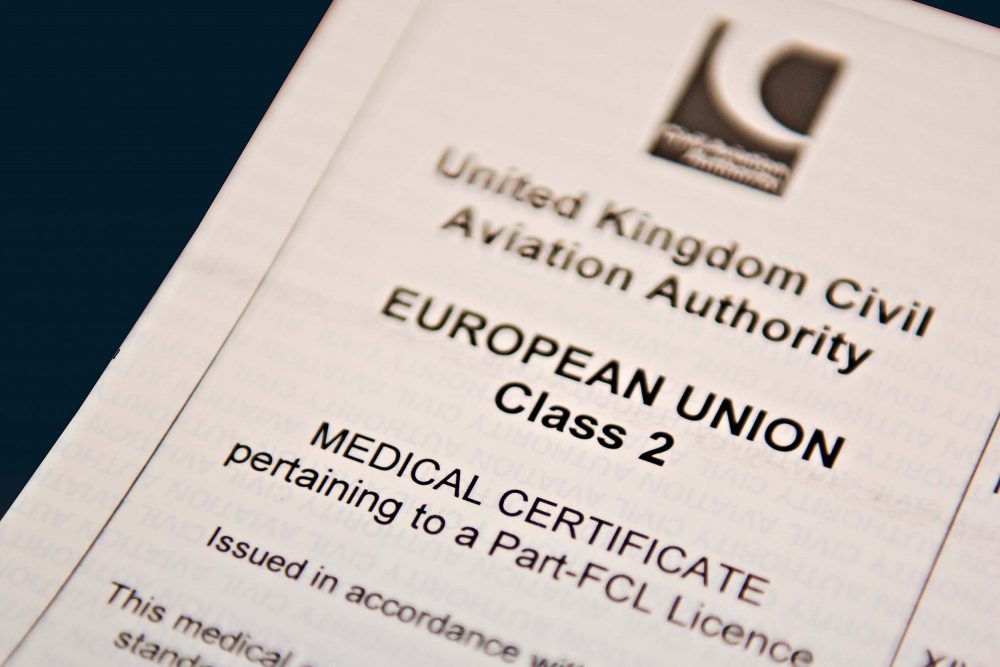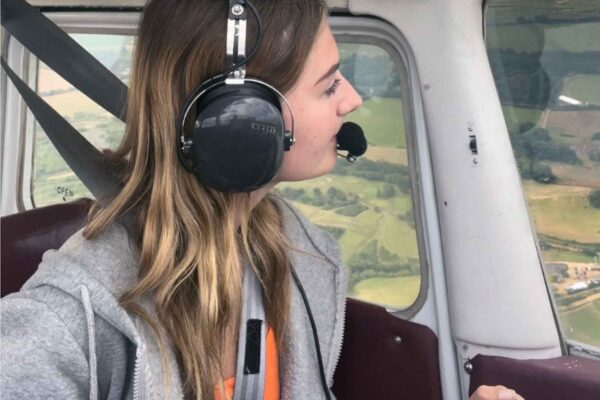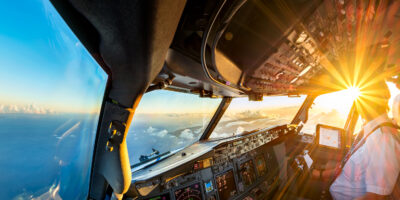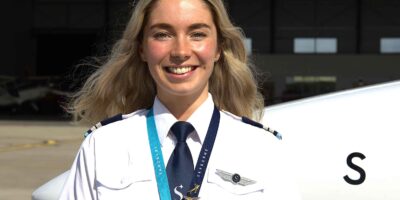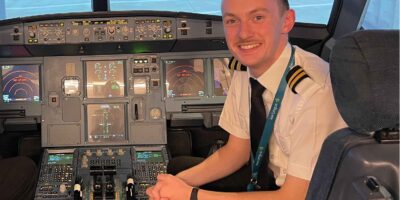Anyone wishing to fly any type of aircraft in the UK will need some form of medical certification or declaration. Usually a UK CAA Medical Certificate depending on what type of flying you’d like to do and where you want to go. Once you have got your licence there are further ways to get a medical validation, but these are not available to student pilots unless you are going to fly microlights or the unregulated SSDRs.
PPL – Class 2 Medical Certificate
If you’re working towards a UK CAA PPL, then you’ll need to obtain an UK CAA Class 2 medical as part of the licensing requirements. But don’t panic, most people will have no problem whatsoever in obtaining a Class 2 medical certificate. The Class 2 medical can be carried out by any Aeromedical Examiner (AME) or at an Aeromedical Centre – you can find the nearest one at www.caa.co.uk or asking at your local airfield will usually reveal where most local people go. The medical examination takes about an hour and the AME is responsible for setting the fee.
Before setting off to see an AME you will need to register with the CAA on its Cellma System. This takes a bit of time to set up, get verified and for you then to be able to do the application and pay the CAA fee.
The application goes into some detail. If there have been more serious health issues you may want to get a copy of your NHS medical notes and take these with you when you go for the examination.
After that has been done and you have booked an appointment with your AME you can set off for the medical. The AME will review the application you made on the Cellma System, then carry out the physical examination, including a vision and colour vision test, a simple hearing test and an examination of various organs and body parts. It doesn’t include any internal or intimate examination but will feature an examination of your groin to make sure there are no hernias.
For the very first Class 2 examination you have to undergo a more comprehensive eye examination which can be done by an optometrist or consultant ophthalmologist. Most High Street opticians can provide this service – the price varies so it is worth asking a few. Since January 2019 it is also a requirement again to have an ECG (heart trace) at your initial medical.
The Class 2 medical meets the international ICAO standard and is valid for flights all over the world in UK-registered aeroplanes.
Light Aeroplanes Pilot’s Licence – LAPL Medical
The LAPL medical certificate for the UK’s Light Aircraft Pilot’s Licence was introduced by EASA and the UK CAA in 2012, as an alternative to a Class 2. The LAPL medical certificate is valid in the UK. The LAPL medical certificate has slightly lower requirements and the privileges it confers are, therefore, also more limited than those of a Class 2 medical certificate.
In the UK, a registered GP may be able to issue a LAPL medical certificate for those who have no potentially serious medical conditions, either at present or in the past.
You can check which conditions would preclude your GP being able to issue a LAPL medical certificate on the CAA website. The current list includes visual field defects, heart disease, hearing aids, neurological and psychiatric conditions (including antidepressant and sedative medication), diabetes requiring medication, chronic lung disease, organ transplant, alcohol and substance misuse, cancer, pneumothorax, epilepsy, personality disorder, and learning difficulties.
It’d be up to your GP to decide if, and when, they’re able to carry out the assessment – it isn’t an NHS service. The cost for an LAPL medical certificate via your GP is up to the GP.
“Don’t panic – most people will have no problem in obtaining a Class 2 medical certificate”
There are no admin costs for the GP to register, nor is any fee required to be paid to the CAA for the certificate. If your GP isn’t able or willing to do the LAPL medical assessment, you need to go to an AME. Your GP may also have to refer you to an AME if an issue is identified during the assessment, which precludes the issue of a LAPL certificate. A LAPL medical certificate is usually a bit cheaper than a Class 2 medical as fewer tests are required (no compulsory ECG) and is valid for five years if you’re younger than 40, while over that age it’s valid for two years.
Please note that when you are going to an AME for your LAPL Medical, you have to register with the CAA Cellma System, have your details verified and make the application online there too.
Pilot Medical Declaration (PMD)
In August 2016 the CAA introduced a new pilot self-declaration, to replace the old-style NPPL Medical Declaration, which needed to be endorsed by your GP.
The scheme is simplified and to make the self-declaration you have to visit the CAA website and tick the boxes relevant to your flying. It cannot be used as a declaration for solo flights by pilots who hold no licence.
The PMD, aka self-declaration, can be used to validate a number of licences, e.g. UK NPPL and UK CAA PPL. However, it’s important to check that your combination of licence and medical certificate is fit for your intended flying. On the CAA’s website CAP 1441 will tell you what works. The UK CAA self-declaration is only valid in the UK’s airspace and not abroad.
For most pilots, the box declaring that you’ll be flying aeroplanes with a maximum take-off weight (mtow) of 2,000kg is the important one. If your intention is to fly those aeroplanes you just need to be fit enough to drive a car and declare that you aren’t taking any medication for a psychiatric illness then you’re good to make the declaration and away you go.
If you want to fly something bigger, between 2,000kg and 5,700kg, you can only make the self-declaration if you don’t suffer from or have suffered from the list of conditions below:
■ Being prescribed medication for any psychiatric illness
■ Bipolar disorder, psychosis or a diagnosis of personality disorder
■ Drug abuse or alcohol misuse or addiction (or conviction for drink/drug driving)
■ Being prescribed medication or treatment for angina or heart failure
■ Cardiac surgical procedures including cardiac device implantation
■ Recurrent fainting or collapse (syncope)
■ Unexplained loss of consciousness
■ Insulin treatment
■ Chronic lung disease with shortness of breath on exertion
■ Any neurological condition requiring medication
■ Seizures or epilepsy
■ Significant functional physical disability likely to impair safe operation of normal flight controls
If you have any of the above you must present yourself to an AME for a medical assessment, to obtain a LAPL or higher class of medical certificate.
Commercial Flying
If you’re thinking of a commercial career, you’ll need to pass a Class 1 medical assessment, which can only take place at an Aeromedical Centre. The Class 1 medical includes Class 2 privileges and validities. It is recommended that you consider getting a Class 1 medical certificate before you commit to any financial agreement with a training provider for either the practical or theoretical study. After all, if you fail your medical, you won’t be able to complete your training.
Gliding
The requirements for medical certification to fly gliders in the UK are governed by the BGA. In addition to the medical certificates you can also use a current driving licence to go gliding solo in the UK. It’s also possible to make a declaration that you meet the standard of the ordinary driving licence. For those wanting to fly passengers or instruct, a higher medical standard is required. Details on the BGA website.
Addendum: With the UK having left EASA, UK-issued licences and medicals are not automatically valid for flying EASA-registered aeroplanes outside the UK. Note LAPL licences and medicals are not ICAO compliant and it is not possible to use a UK-issued LAPL medical and licence to fly a G-reg aeroplane in EASA countries. EASA AMEs and AeMCs cannot undertake medicals for UK licence holders.



